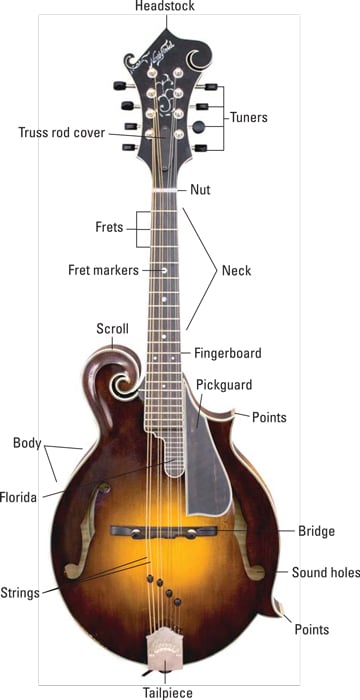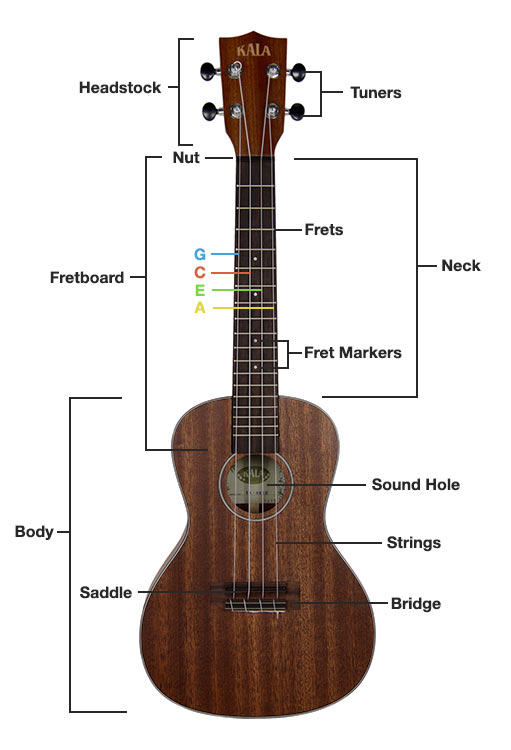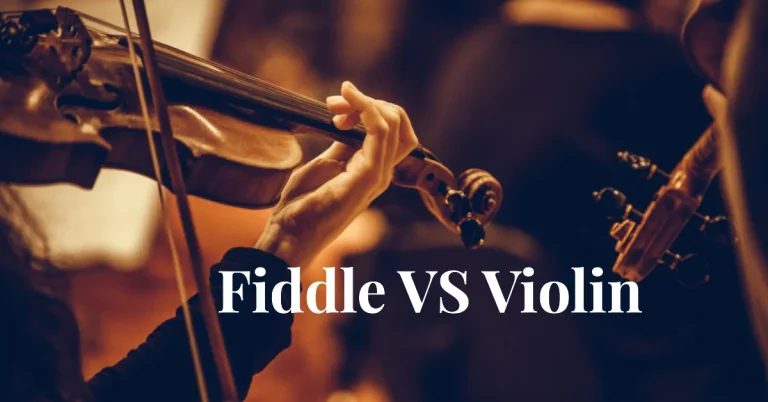What is difference between mandolin and ukulele
Did you know the difference between a mandolin and a ukulele? Its big puzzle for every beginner which of best for them. This guide will help you make an decision. So, let’s get started!
Here is a comparison chart mandolin vs ukulele:
| Feature | Mandolin | Ukulele |
|---|---|---|
| Number of strings | 8 | 4 |
| String material | Steel | Nylon |
| Tuning | GDAE | GCEA |
| Body shape | Pear-shaped | Figure-eight |
| Sound | Bright, clear | Mellow, warm |
| Playing style | Strumming, fingerpicking | Strumming, fingerpicking |
| Genres | Folk, bluegrass, jazz, classical | Folk, pop, Hawaiian |
| Difficulty level | Moderate | Easy |
| Price range | $100 – $1,000+ | $50 – $500+ |
What is a Mandolin?

The mandolin is a small musical instrument that comes from Italy. It was created in the 18th century. It has a short neck and eight strings.
It belongs to the lute family and comes in various types, each with its unique shape.
The mandolin’s sound is versatile which is suitable for a wide range of music genres, from bluegrass to classical.
It is typically pear-shaped, with a fretted neck and four courses of doubled strings, giving a total of eight steel strings.
The strings are typically tuned in fifths, with the same tuning as a violin (G3, D4, A4, E5).
Mandolins are play with a pick or a plectrum. They can play many different types of music, like folk, bluegrass, jazz, and classical.
There are two main styles of mandolin:
F-style mandolins have an ornamental scroll in the headstock and two points on the lower body of the instrument.
A-style mandolins usually have a plain, pear-shaped body and no points.
What is a Ukulele?

The ukulele is a member of the guitar family. It was developed in the 1880s in Hawaii, inspired by a Portuguese guitar-like instrument called the machete. The ukulele has four strings made from soft nylon, and its size and neck length can vary, influencing the instrument’s sound.
It is typically made of wood and has a body that is shaped like a figure eight. The strings are typically tuned to GCEA, which gives the ukulele a bright, mellow sound.
Ukuleles have a strong connection to Hawaii, where they gained popularity towards the end of the 1800s. Nowadays, individuals from various age groups from all corners of the globe take pleasure in playing the instrument.
The ukulele is perfect for folk and pop music, thanks to its iconic Hawaiian sound.
There are four main sizes of ukulele: soprano, concert, tenor, and baritone. The soprano ukulele is the smallest and has the highest pitch. The baritone ukulele is the largest and has the lowest pitch.
Mandolin vs Ukulele: The Key Differences

Both have several key differences:
- Musical Families: The mandolin is from the lute family, while the ukulele belongs to the guitar family.
- Soundholes: Mandolins typically have f-holes, similar to violins, which allow for better projection and louder sound. Ukuleles, however, usually have round soundholes, creating a warmer and fuller voice.
- Construction: The mandolin has a floating bridge and a tailpiece to secure the strings, resulting in a higher action compared to the ukulele. Ukuleles, due to their nylon strings, use friction pegs instead of the mechanical tuning machines found on mandolins.
- Sizes: The ukulele comes in four different sizes and mandolin generally comes in one standard size.
Anatomy of the mandolins and ukuleles
When examining the physical structures of the mandolin and the ukulele, distinct differences become evident.
Mandolin’s Construction and Components

- Body Shape and Size The mandolin typically features a teardrop-shaped body, allowing for optimal sound projection and resonance. Its compact size facilitates comfortable placement against the player’s body while ensuring an extensive tonal range.
- Soundboard and Tone The mandolin’s soundboard, commonly referred to as the “top,” is made of high-quality wood, such as spruce or cedar. This selection influences the instrument’s tonal qualities, offering warm and vibrant tones that resonate with depth and clarity.
- Strings and Tuning Mandolins are typically equipped with eight strings that are grouped into four pairs, known as courses. These paired strings are tuned in unison or octaves, providing the instrument with its rich and harmonious sound. The standard tuning for a mandolin is G-D-A-E.
Ukulele’s Physical Structure

- Body Shapes: Soprano, Concert, Tenor, and Baritone Ukuleles come in various body shapes. The soprano size offers a traditional and compact shape, producing a distinctive bright and vibrant sound. The concert, tenor, and baritone, on the other hand, provide a larger soundboard, resulting in enhanced volume and tonal depth.
- Sound Production and Tonal Characteristics The ukulele’s sound production is dependent on the materials used for its construction, including wood, strings, and soundholes. The combination of these elements contributes to its unique and melodic sound, characterized by a sweet, tinkling tone that resonates with warmth and charm.
- String Types and Tuning Variations Ukuleles typically have four strings made of nylon or synthetic materials. The most common tuning for a standard ukulele is G-C-E-A, allowing for easy chord formation and strumming patterns.
Tuning: Mandolin vs Ukulele
The mandolin and ukulele are tuned differently. The mandolin is typically tuned to GG-DD-AA-EE, while the ukulele is generally tuned to G-C-E-A. Although it’s possible to tune a mandolin like a ukulele, it’s not very practical due to the mandolin’s narrower neck. The chord shapes of the ukulele and mandolin are also very different due to their unique tunings.
Learning to Play: ukulele vs mandolin
If you’re a beginner, you might find the ukulele easier to learn. Its soft nylon strings are gentler on the fingers, and with only four strings, learning chord shapes can be simpler. However, if you’re interested in learning scales and note names, the mandolin might be easier. Your musical style and genre preference will also influence which instrument is easier for you to learn.
Portability and Travel-Friendly Nature
For musicians on the go, the portability and travel-friendly aspects of an instrument are essential considerations.
Mandolin: Managing Size and Transportation Challenges
- Gig Bags, Cases, and Transportation Tips Given its larger size and delicate structure, transporting a mandolin can present challenges. The use of gig bags or hardshell cases helps protect the instrument during transit, ensuring its safety and longevity. Additionally, taking precautions such as loosening the strings and adjusting the bridge can mitigate damage caused by temperature and humidity changes.
- Portable Mandolin Alternatives for On-the-Go Musicians Musicians who prioritize portability can explore alternative mandolin options designed for travel. Compact mandolins, collapsible models, or mandolin ukuleles offer convenient solutions, allowing for ease of transportation without compromising sound quality.
Ukulele: Embracing Convenience and Wanderlust
- Compact Size and Ease of Transport The ukulele’s compact size and lightweight construction make it an ideal instrument for musicians on the move. Whether stowed in a backpack, carried in a soft case, or securely stored in a hardshell case, the ukulele is incredibly portable, providing the flexibility to play music wherever inspiration strikes.
- Travel-Friendly Accessories for Ukulele Players Ukulele players can further enhance their travel experience with accessories such as clip-on tuners, compact amplifiers, and mini stands tailored specifically to the ukulele’s unique dimensions. These accessories ensure convenience and ease of use while maintaining the instrument’s portability.
Cost Comparison: The Mandolin and The Ukulele
In terms of cost, ukuleles are generally cheaper than mandolins. A good quality beginner ukulele cancost between $50 and $150, while a beginner’s mandolin might set you back around $300. However, remember that a higher price tag doesn’t always guarantee better quality. It’s essential to do your research before making a purchase.
Read Also : What is difference between violin and viola
Sound Comparison: mandolin and ukulele
When comparing the sound characteristics of the ukulele and mandolin, distinctive differences emerge.
Distinguishing Mandolin’s Rich and Dynamic Sound
- Tonal Depth and Tonal Variation Across the Strings The mandolin produces a rich and dynamic sound, with each course of strings creating a distinct tonal depth. The lower strings exhibit a deep and resonant timbre, while the higher strings produce bright and vibrant tones. This tonal variation across the strings allows for expressive and nuanced playing.
- The Impact of F-Holes on Sound Projection The presence of F-holes on the mandolin’s soundboard plays a crucial role in sound projection and resonance. These f-shaped soundholes facilitate the release of sound waves, resulting in a well-balanced tone that projects with clarity and precision.
Embracing Ukulele’s Bright and Melodic Qualities
- Unique Timbre and Resonance Influenced by Size Variations Ukuleles, with their varying body sizes, offer distinctive timbre and resonance. Smaller-sized ukuleles, such as the soprano, produce a bright and lively sound, while larger sizes like the baritone exhibit a warmer and more robust tonality. This size variation enables players to select an instrument that suits their desired tonal characteristics.
- The Role of Soundholes in Shaping Ukulele’s Sound Profile The soundholes on a ukulele, commonly referred to as “rosettes,” contribute to its sound profile. These openings allow sound waves to escape, resulting in the instrument’s unique and melodious sound.
Musical Repertoire and Adaptability
The mandolin and ukulele boast diverse repertoires, each flourishing within different genres.
Mandolin: Vast Repertoire Across Different Genres
- Classical Gems by Vivaldi, Mozart, and Beethoven The mandolin’s classical repertoire features iconic compositions by esteemed composers such as Vivaldi, Mozart, and Beethoven. Their intricate and elaborate compositions showcase the mandolin’s melodic capabilities, offering a rich and rewarding musical experience.
- Bluegrass Hits and Folk Essentials for Mandolin Enthusiasts Within the realm of bluegrass and folk genres, the mandolin shines, providing the backbone of these lively and spirited musical styles. Its rapid picking and precise rhythms perfectly complement the high-energy performances inherent in bluegrass and folk music.
Ukulele: Flourishing in Diverse Musical Landscapes
- Hawaiian Classics and Island-Inspired Tunes The ukulele’s roots in Hawaiian music make it an ideal instrument for playing Hawaiian classics and island-inspired tunes. From traditional songs to modern interpretations, the ukulele’s bright and cheerful sound encapsulates the spirit of the islands.
- Modern Pop, Rock, and Indie Songs on the Ukulele The ukulele’s charm extends beyond its traditional roots, infiltrating the realms of pop, rock, and indie music. Artists and enthusiasts alike have embraced the ukulele’s unique sound, featuring it prominently in modern compositions and covers.
Read also : What is difference between fiddle and violin
Making the Choice: Mandolin or Ukulele?
Choosing between the mandolin and the ukulele depends on several factors, including your musical taste, experience, and budget. If you’re a fan of chords and popular songs, the ukulele might be your best bet. But if you’re into classical music, the mandolin could be a better fit.
If you’re learning an instrument for the first time, the ukulele might be easier to pick up. However, if you already play a stringed instrument, especially the violin, you’ll find the mandolin easier to learn due to its similar tuning.
When it comes to budget, the ukulele is generally more affordable. But remember, the cost should not be the only factor in your decision. The sound, feel, and personal satisfaction you get from playing the instrument are equally important.
Mandolin chords vs Ukulele chords
Ukuleles are typically tuned to GCEA, while mandolin is tuned to GDAE. This means that the notes you play on each string will be different, resulting in different chords.
Here is a table of some common chords on the mandolin and ukulele:
| Chord | Mandolin | Ukulele |
|---|---|---|
| C | GDAE | GCEA |
| D | GDAD | GCEA |
| E | GDAA | GCEA |
| F | GDGD | GCEA |
| G | GDAE | GCEA |
| A | GDAA | GCEA |
| B | GDGD | GCEA |
Conclusion
Whether you choose the mandolin or the ukulele, both instruments offer unique sounds and learning experiences. They each have their charm and can bring a lot of joy to your musical journey. Remember, there’s no limit to what you can play once you’re a pro!




